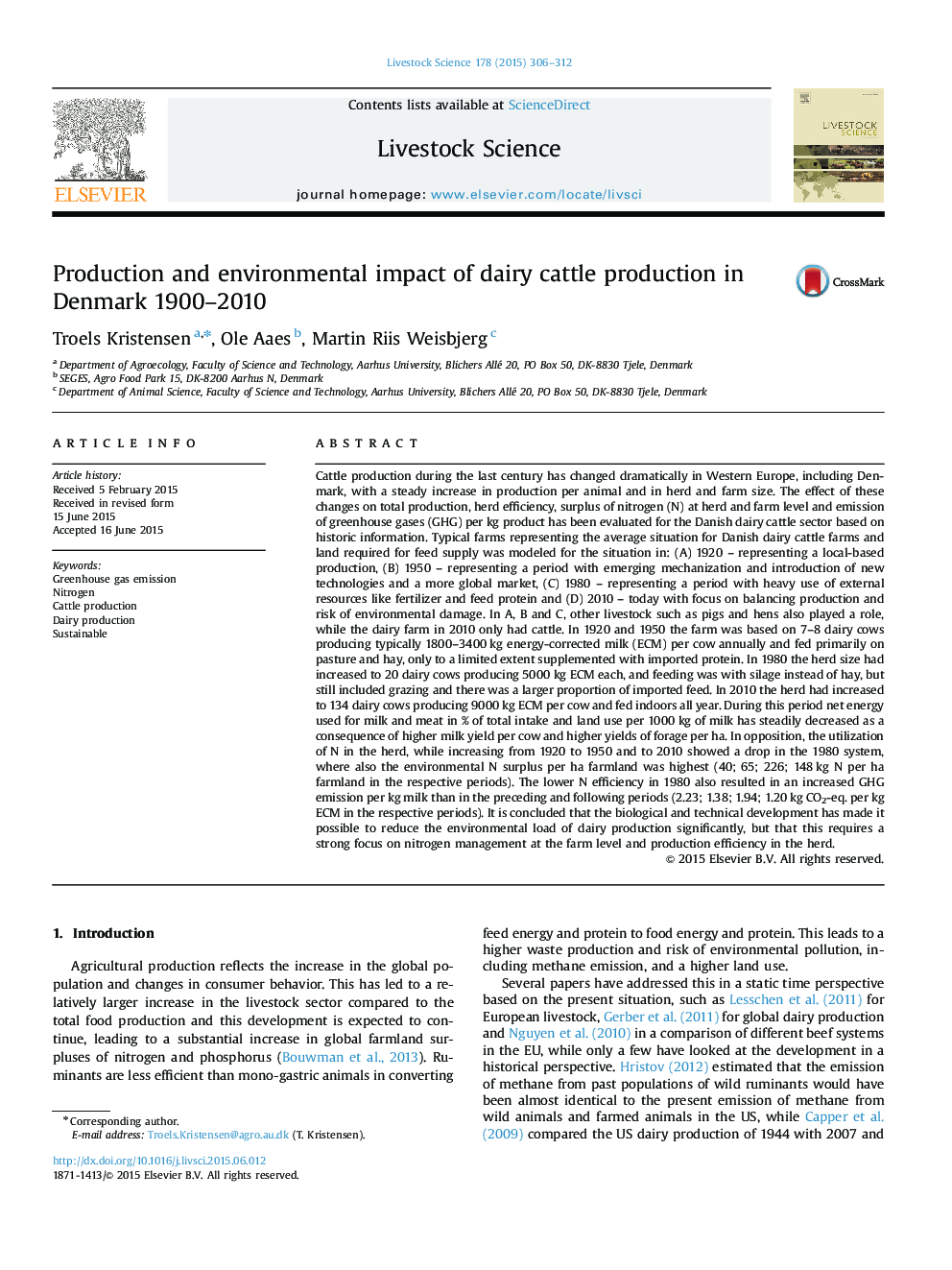| کد مقاله | کد نشریه | سال انتشار | مقاله انگلیسی | نسخه تمام متن |
|---|---|---|---|---|
| 2447091 | 1553954 | 2015 | 7 صفحه PDF | دانلود رایگان |
• Change in dairy production 1920 - 2010
• From farm N surplus of 40 to 148 kg N per ha farmland.
• From 2.23 to 1.20 kg CO2 eq. GHG emission per kg milk.
• From 0.78 to 0.17 ha global land per 1000 kg milk.
• From 1443 to 7372 kg milk per ha farmland.
Cattle production during the last century has changed dramatically in Western Europe, including Denmark, with a steady increase in production per animal and in herd and farm size. The effect of these changes on total production, herd efficiency, surplus of nitrogen (N) at herd and farm level and emission of greenhouse gases (GHG) per kg product has been evaluated for the Danish dairy cattle sector based on historic information. Typical farms representing the average situation for Danish dairy cattle farms and land required for feed supply was modeled for the situation in: (A) 1920 – representing a local-based production, (B) 1950 – representing a period with emerging mechanization and introduction of new technologies and a more global market, (C) 1980 – representing a period with heavy use of external resources like fertilizer and feed protein and (D) 2010 – today with focus on balancing production and risk of environmental damage. In A, B and C, other livestock such as pigs and hens also played a role, while the dairy farm in 2010 only had cattle. In 1920 and 1950 the farm was based on 7–8 dairy cows producing typically 1800–3400 kg energy-corrected milk (ECM) per cow annually and fed primarily on pasture and hay, only to a limited extent supplemented with imported protein. In 1980 the herd size had increased to 20 dairy cows producing 5000 kg ECM each, and feeding was with silage instead of hay, but still included grazing and there was a larger proportion of imported feed. In 2010 the herd had increased to 134 dairy cows producing 9000 kg ECM per cow and fed indoors all year. During this period net energy used for milk and meat in % of total intake and land use per 1000 kg of milk has steadily decreased as a consequence of higher milk yield per cow and higher yields of forage per ha. In opposition, the utilization of N in the herd, while increasing from 1920 to 1950 and to 2010 showed a drop in the 1980 system, where also the environmental N surplus per ha farmland was highest (40; 65; 226; 148 kg N per ha farmland in the respective periods). The lower N efficiency in 1980 also resulted in an increased GHG emission per kg milk than in the preceding and following periods (2.23; 1.38; 1.94; 1.20 kg CO2-eq. per kg ECM in the respective periods). It is concluded that the biological and technical development has made it possible to reduce the environmental load of dairy production significantly, but that this requires a strong focus on nitrogen management at the farm level and production efficiency in the herd.
Journal: Livestock Science - Volume 178, August 2015, Pages 306–312
